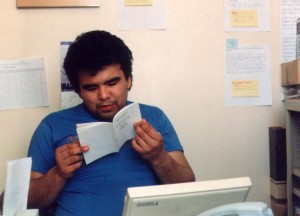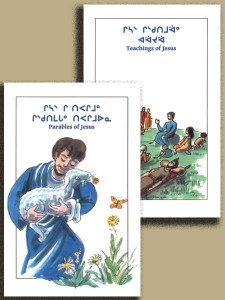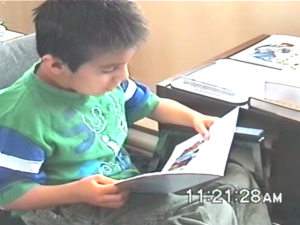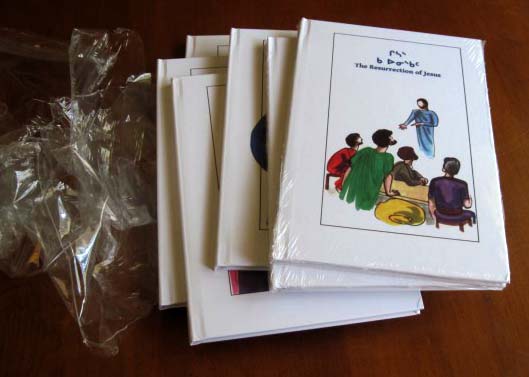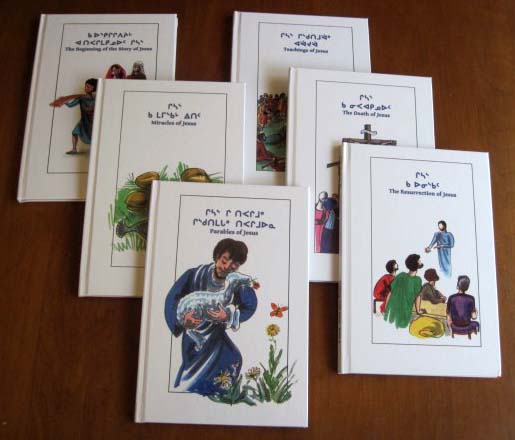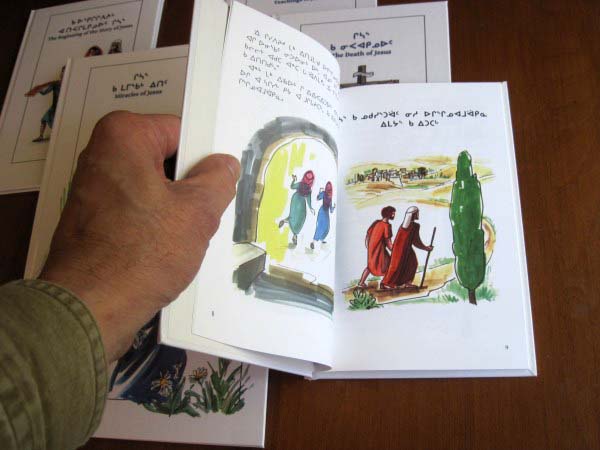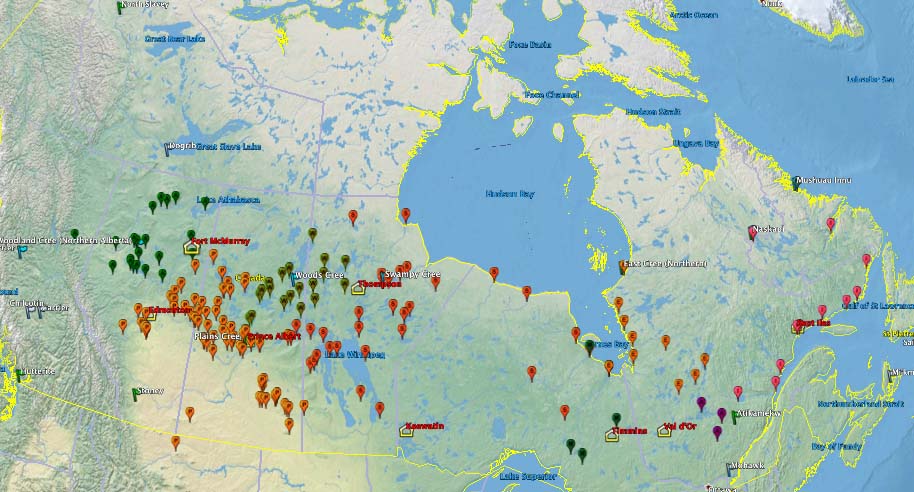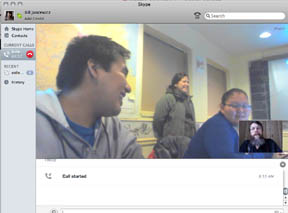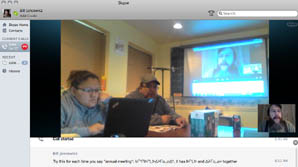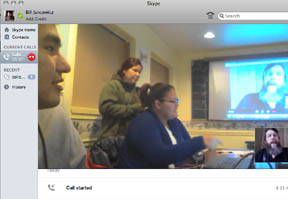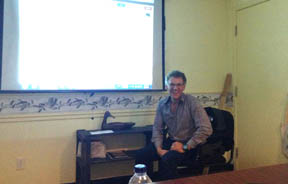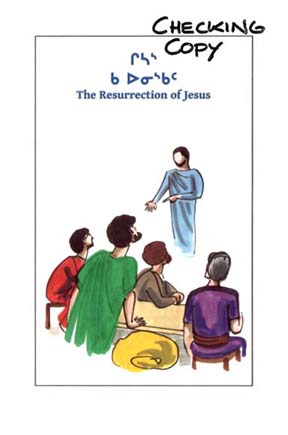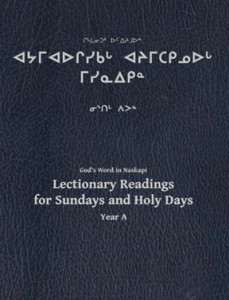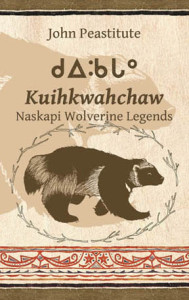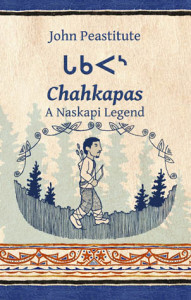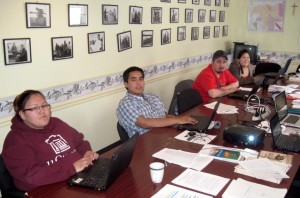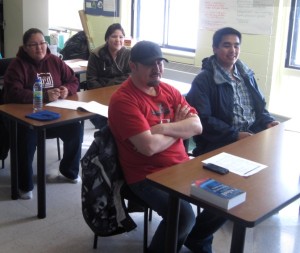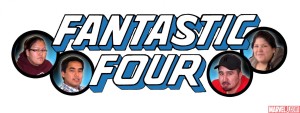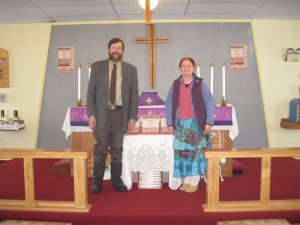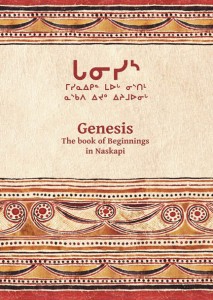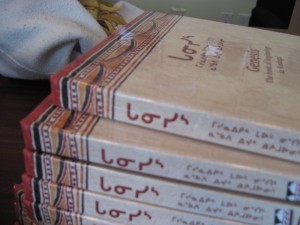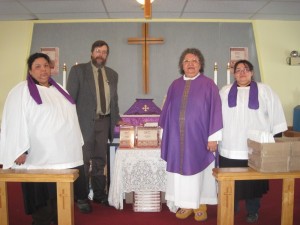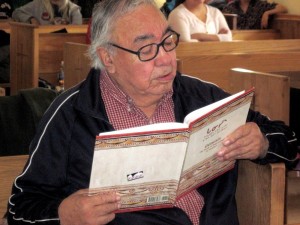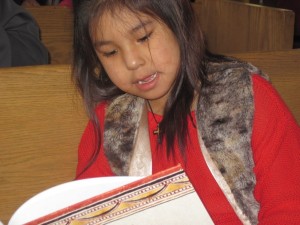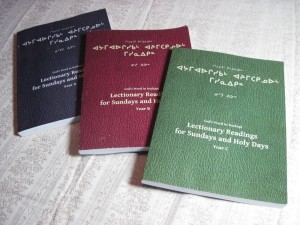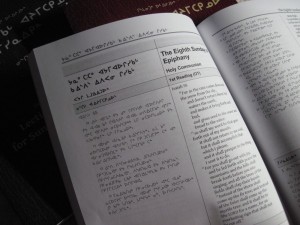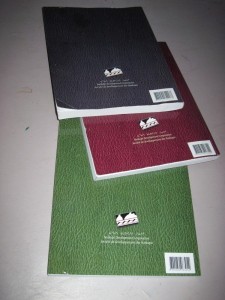Our Dear Partners,
Even though we are still living here in Aldergrove, BC where Norma Jean is working hard on her MA studies, we are still working with the Naskapi translation team in Kawawachikamach.
The celebration of resurrection day is nearly here, and this year marks a special Easter for 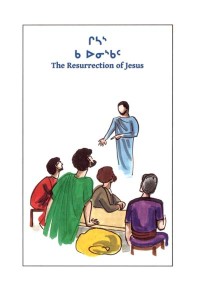 the Naskapi community. We have completed the final book in the Walking With Jesus series, ᒋᓴᔅ ᑲ ᐅᓂᔅᑲᑦ The Resurrection of Jesus, printed and delivered in time for Easter at Kawawachikamach.
the Naskapi community. We have completed the final book in the Walking With Jesus series, ᒋᓴᔅ ᑲ ᐅᓂᔅᑲᑦ The Resurrection of Jesus, printed and delivered in time for Easter at Kawawachikamach.
The Walking With Jesus series was a literature promotion and scripture translation initiative sponsored by the Bible Society in the early 1990s, that consisted of a series of six booklets containing scripture portions from the Gospels that could be translated “shell-book” style for multiple languages and produced at lower cost because of the volume printed. The Walking With Jesus series played an instrumental role in the establishment of the Naskapi language project for Bible translation in 1993, and books 1, 2, 5 and 6 were completed at that time. These were the first books ever published in the Naskapi language.
For various budgetary and human-resource reasons, in the middle 1990s the project was set aside by the Naskapi Development Corporation (NDC), in order to focus on pursuing other language development projects. Still, the booklets that were produced found a niche readership within the Naskapi community, and were distributed through the NDC, the church, the school and the local store. Meanwhile, as we slowly moved ahead with other language development and translation projects locally, the Bible Society discontinued the production of more booklets in the series. Consequently, books 3 and 4 were not completed.
Fast-forward to 2007, and the dedication of the Naskapi New Testament: The Bible Society partnered with the Naskapi Development Corporation for the 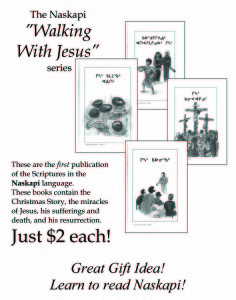 publication of this truly significant book. You were there to share the excitement with the community on September 16, 2007, when the Naskapi population at large was introduced to a book that they valued greatly, and were just starting to appreciate just how much it meant to them. This marked the beginning of a period of deepening community interest in Naskapi literacy, language development, education and literature. Several NDC projects in partnership with the Naskapi school, daycare, and church were initiated at this time that resulted in the acceleration of the release of book titles being produced and read in Naskapi in the community. The Naskapi community needed books, and they needed good books, and right away, too.
publication of this truly significant book. You were there to share the excitement with the community on September 16, 2007, when the Naskapi population at large was introduced to a book that they valued greatly, and were just starting to appreciate just how much it meant to them. This marked the beginning of a period of deepening community interest in Naskapi literacy, language development, education and literature. Several NDC projects in partnership with the Naskapi school, daycare, and church were initiated at this time that resulted in the acceleration of the release of book titles being produced and read in Naskapi in the community. The Naskapi community needed books, and they needed good books, and right away, too.
So the Translation and Linguistics Services Department at NDC revived the “Walking With Jesus” project, and entered into a special agreement with the Bible Society to produce the “missing volumes” in the series: Books 3 and 4, the “Parables” and “Teachings” of Jesus.
In June of 2010, we signed an agreement with the Bible Society for the use of the Illustrations in the Walking With Jesus Series, and work begun on completing the series that was begun 17 years earlier.
Thanks to the advent of “print-on-demand” publishing services, our tiny department now had the resources it needed to produce bookstore-quality resources in small quantities needed for the Naskapi community. Also at this time, Norma Jean Jancewicz completed a literacy course at SIL at the University of North Dakota, and immediately applied what she learned to the production of quality literacy materials for Naskapi children at the Naskapi childcare centre and at the school. Also, now that the New Testament was completed, our department could focus on Old Testament readings and work towards the completion of the complete set of Sunday lectionary readings with the local Naskapi Anglican church.
But it was the inspiration that was directly related to the Walking With Jesus series that had one of the most significant impacts in our community. Kyle, the young grandson of Ruby Sandy-Robinson, the Administrative Director of the Naskapi Development Corporation, was heard at home reading from Book 3 of the Walking With Jesus series in Naskapi. Ruby was so moved and inspired by the fact that her grandson could read the story of Jesus in his own language (having learned to read through the result of the
Naskapi curriculum program at the school) that she also was encouraged to increase her own efforts to learn to read her own mother tongue better. She says that her own desire and subsequent ability to read the scriptures had their foundation in her late father, Deacon Joseph Sandy, reading the Cree scriptures to the family when she was a girl–but it was her own grandson reading in Naskapi to her that helped her realize that being able to read the scriptures herself in her own language were indeed a blessed possibility. She actively encouraged the Translation and Linguistics Services Department at NDC to not only complete the two “missing” Walking With Jesus books, but to also complete a revision and re-issuing of the entire Walking With Jesus series in Naskapi. Here is a video of Kyle reading, which has been such an inspiration to his grandmother Ruby (and others) in the Naskapi community:
https://www.youtube.com/watch?v=6vimqT144lg
So over the past three years, we have made steady progress on the publication and review of the complete set of the Walking With Jesus books in Naskapi. These books have become a centerpiece of literacy education in the Naskapi language, being used at home and in the school, and have also been used in several adult-literacy initiatives over the past several years.
Serving with you, Bill and Norma Jean Jancewicz


